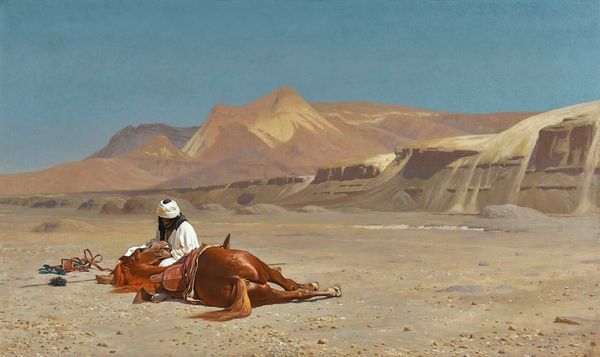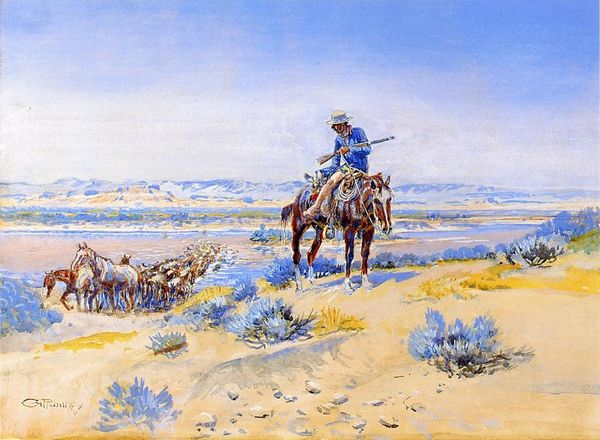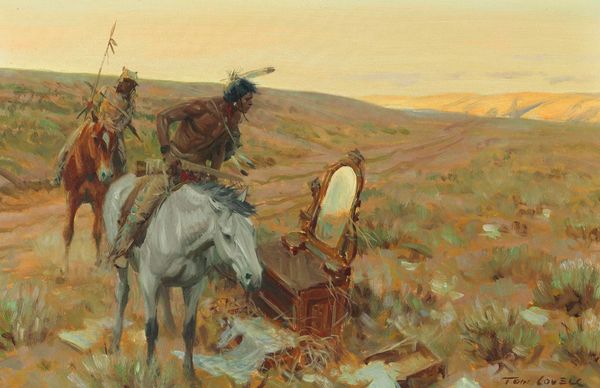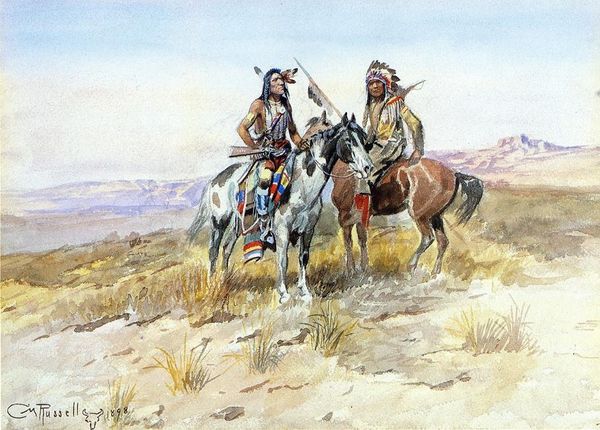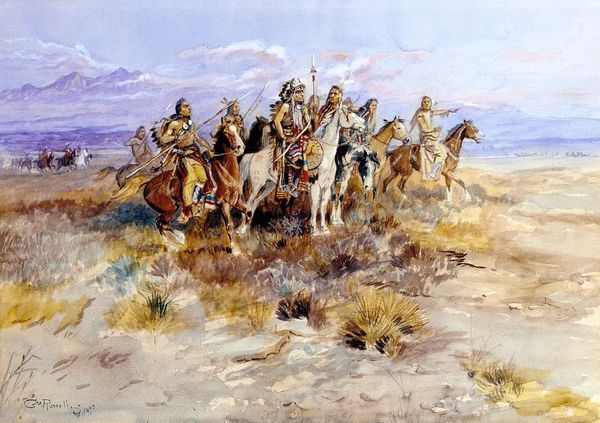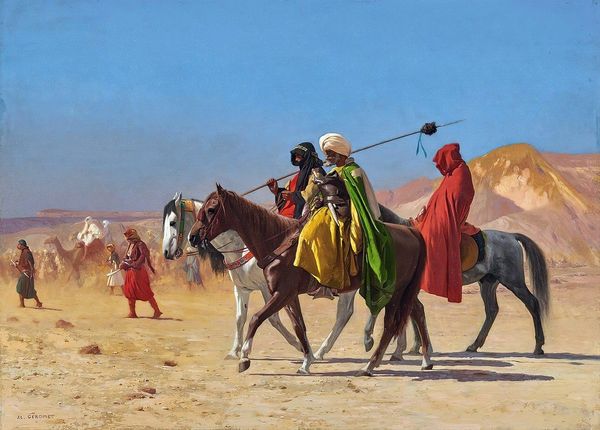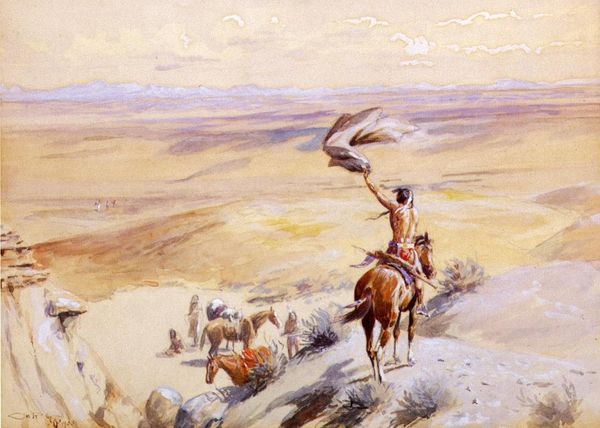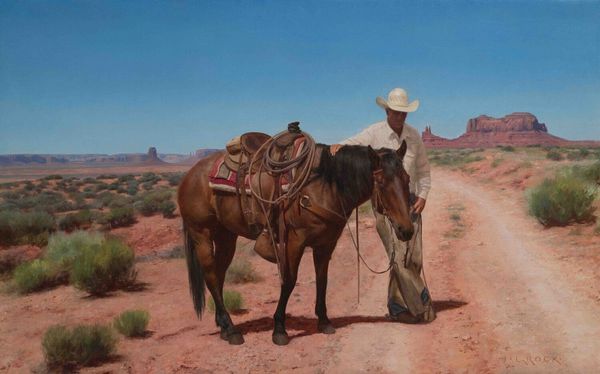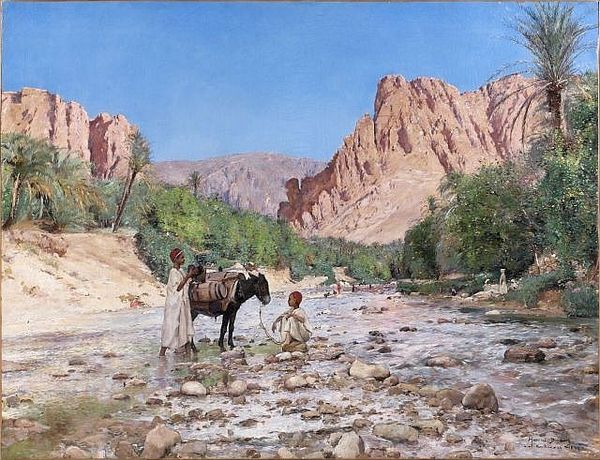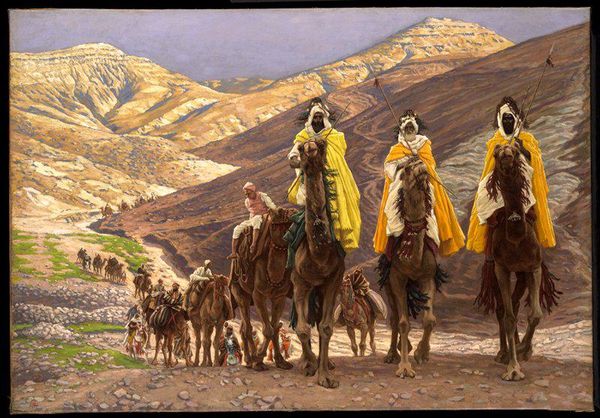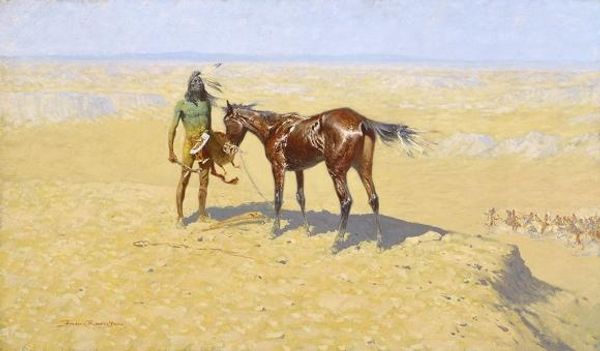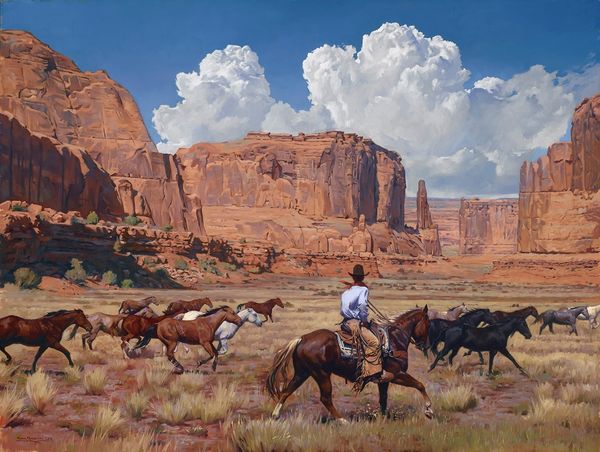
painting, oil-paint
#
figurative
#
painting
#
oil-paint
#
landscape
#
oil painting
#
orientalism
#
genre-painting
#
academic-art
#
realism
Copyright: Public Domain: Artvee
Curator: There's a certain tranquility to this scene. It's dominated by sandy earth tones meeting the cool turquoise of the water under a hazy blue sky. Editor: This is "Golfe D’Akaba," an oil painting by Jean-Léon Gérôme. While the exact date is unknown, it reflects Gérôme's Orientalist period. He was deeply interested in representing the Middle East and North Africa for European audiences. Curator: "Orientalist period" is right. Looking at this, one immediately wonders about the power dynamics inherent in its creation and reception. We have a figure on a donkey, leading a smaller white donkey, seemingly set apart from the larger caravan further down the beach. It's this emphasis on singular figures within a sweeping landscape that raises concerns around representation and objectification. Editor: Exactly. Gérôme, like many of his contemporaries, traveled extensively in the region. But his portrayals are viewed now as products of a colonial gaze, reinforcing existing stereotypes even, or especially, when intending accuracy. The "picturesque" nature of the scene – the bright light, the exotic attire – becomes, in a way, complicit with the political realities of the time. The way that figure's face is shrouded only contributes to the construction of the "mysterious East," Curator: Right. It becomes an image, even an ideology, divorced from complex individual identities and lived experiences. What's presented to the Western gaze here risks erasing nuances, flattening differences, and serving a specific power narrative about otherness. How does the composition, in your eyes, enhance or detract from these social and political readings? Editor: The placement of the rider in the foreground definitely commands our attention. They dominate the visual field. This emphasis, combined with the receding figures and the vast landscape, positions them as figures in an exotic land, reinforcing European perceptions of control. It's about shaping public opinion, contributing to a very specific, often distorted, visual culture that fueled and justified colonial enterprises. Curator: It is crucial to view this painting, therefore, with a critical lens. By acknowledging its historical context, we start unraveling the embedded social narratives related to colonialism, power, and the representation of marginalized communities. Editor: Precisely. "Golfe D’Akaba," as beautiful as it appears at first glance, presents an opportunity to discuss the complexities of artistic interpretation, representation, and their role in constructing our understanding of the world.
Comments
No comments
Be the first to comment and join the conversation on the ultimate creative platform.
